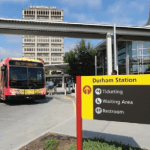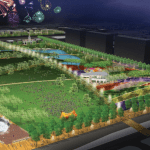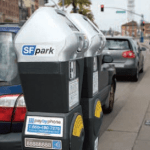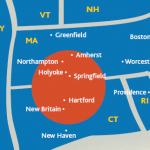Top Story
Infrastructure 2012: Spotlight on Leadership includes a Special Section, “Infrastructure Leadership in the New Economy,” which explores examples of new kinds of leadership, partnerships and funding approaches being utilized across the U.S. in an era of tight budgets.
This section highlights the trend towards funding infrastructure investments through sales and property taxes approved through ballot measures and includes innovative case studies from around the country.
Promising approaches for developing infrastructure networks include those that advance the following:
- Using existing infrastructure to its maximum potential, fully leveraging every resource, and including conservation as part of the puzzle.
- Tapping available federal funding to maximize investment opportunities.
- Linking, explicitly, infrastructure investment and development.
- Exploiting the potential of collaboration and partnership.
Highlights
 The North Carolina case study outlines the complexities of regional planning in the state’s Research Triangle, an area defined by its world-class technology firms, research universities, and medical centers. In Durham County, voters approved a sales tax to meet local transportation needs by an overwhelming 60%, yet significant barriers must be overcome before the region can thrive as a connected knowledge hub.
The North Carolina case study outlines the complexities of regional planning in the state’s Research Triangle, an area defined by its world-class technology firms, research universities, and medical centers. In Durham County, voters approved a sales tax to meet local transportation needs by an overwhelming 60%, yet significant barriers must be overcome before the region can thrive as a connected knowledge hub.
Read More on the Research Triangle
 In December 2009, Oklahoma City approved its third temporary sales tax increase to fund civic improvements and other projects. Revenue from MAPs3 is allowing the city to move forward with ambitious plans for a new central park and improved connections to the Oklahoma River.
In December 2009, Oklahoma City approved its third temporary sales tax increase to fund civic improvements and other projects. Revenue from MAPs3 is allowing the city to move forward with ambitious plans for a new central park and improved connections to the Oklahoma River.
 The SFpark pilot program uses variable pricing to match demand and supply, providing a glimpse at the technology-rich future of parking. Launched in San Francisco in April 2011, the system operates on 7,000 on-street spaces and 12, 250 garage spaces throughout the city. Tech-savvy Bay Area drivers can check online via smartphone app or text message, or call a phone hotline to see where spaces are available, then pay for parking by credit card or phone.
The SFpark pilot program uses variable pricing to match demand and supply, providing a glimpse at the technology-rich future of parking. Launched in San Francisco in April 2011, the system operates on 7,000 on-street spaces and 12, 250 garage spaces throughout the city. Tech-savvy Bay Area drivers can check online via smartphone app or text message, or call a phone hotline to see where spaces are available, then pay for parking by credit card or phone.
 The bi-state area of central Connecticut and western Massachusetts has a history of strong regional cooperation. Since 2000, the region’s public and private sector leaders have promoted the area as “New England’s Knowledge Corridor” and fostered a unified approach to economic, cultural, and civic development. Now, a new BRT system, regional rail line, and federal planning grants are helping the region usher in a more sustainable, transit-oriented future.
The bi-state area of central Connecticut and western Massachusetts has a history of strong regional cooperation. Since 2000, the region’s public and private sector leaders have promoted the area as “New England’s Knowledge Corridor” and fostered a unified approach to economic, cultural, and civic development. Now, a new BRT system, regional rail line, and federal planning grants are helping the region usher in a more sustainable, transit-oriented future.
Read More on the Knowledge Corridor